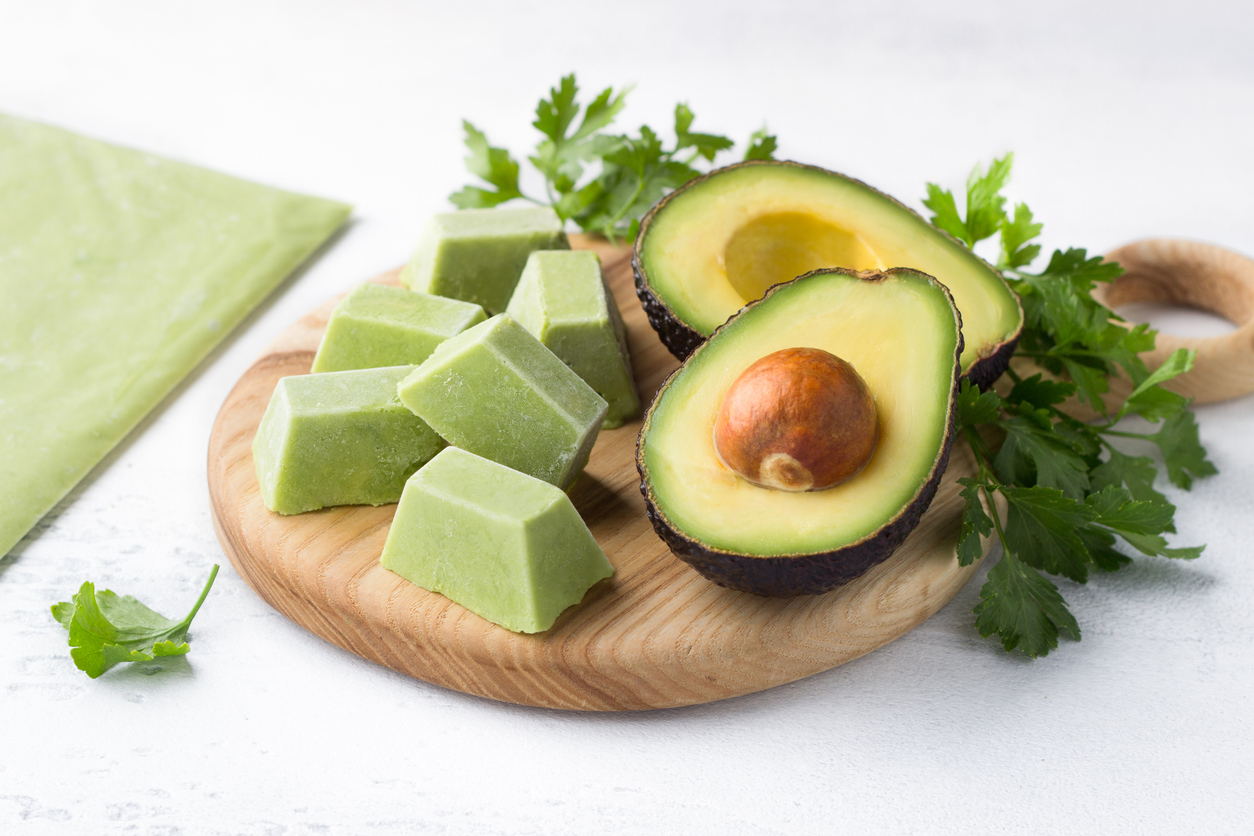Avocado Price Chart: Unveiling the Secrets behind Rising and Falling Prices
Avocado Price Chart: Unveiling the Secrets behind Rising and Falling Prices
Are you an avocado aficionado who can’t resist the creamy goodness of this superfood? Have you ever wondered why one day your favorite green fruit costs a fortune, only to become ridiculously cheap the next? Well, get ready to peel back the layers and dive into the fascinating world of avocado pricing. In this blog post, we’ll be unveiling the secrets behind rising and falling prices with our exclusive Avocado Price Chart. Get ready for some juicy insights that will leave you amazed and hungry for more!
Introduction to Avocados and their Popularity
Introduction to Avocados and their Popularity
Avocados, also known as “alligator pears”, are a popular fruit that has gained immense popularity in recent years. Native to Mexico and Central America, avocados have been cultivated for thousands of years and were considered a staple food by the Aztecs. However, it wasn’t until the 20th century that avocados started gaining attention in other parts of the world.
Today, avocados are consumed all over the globe and have become a favorite among health-conscious individuals. This creamy green fruit is not only delicious but is also packed with essential nutrients such as fiber, healthy fats, vitamins, and minerals. It’s no wonder that avocados have become increasingly popular in the culinary world.
The Rise of Avocado Popularity
Over the past decade, there has been an exponential increase in demand for avocados worldwide. In fact, according to data from Statista, global avocado consumption has nearly doubled between 2010 and 2020. The United States alone consumes over 2 billion pounds of avocados annually.
So what exactly caused this surge in avocado popularity? One factor is its versatility – avocados can be used in various dishes ranging from salads and sandwiches to smoothies and even desserts. Additionally, they are often praised for their numerous health benefits such as promoting heart health and aiding weight loss.
Factors Affecting Avocado Prices
There are several factors that can influence the price of avocados, which has been a highly debated topic in recent years. In this section, we will delve into the various factors that affect avocado prices and explain how they play a role in the fluctuation of prices.
1. Supply and Demand:
The most significant factor affecting avocado prices is the basic economic principle of supply and demand. When there is an increase in demand for avocados, such as during peak avocado season or due to popular trends like the “avocado toast” craze, prices tend to go up. On the other hand, when there is an oversupply of avocados, prices may drop as suppliers try to offload their excess inventory.
2. Climate and Weather Conditions:
Avocado trees require specific growing conditions to produce high-quality fruit. Any extreme weather events like droughts, floods or hurricanes can damage avocado crops and result in lower yields. This leads to a decrease in supply and often results in higher prices for consumers.
3. Transportation Costs:
Since avocados are mainly grown in Mexico and California, transportation costs play a significant role in determining their final retail price. High fuel costs or disruptions in transport routes can cause delays or increased expenses for suppliers, which are then passed on to consumers through higher prices.
– Supply and Demand
The concept of supply and demand plays a significant role in determining the price of avocados. It is a basic economic principle that states the relationship between the quantity of a product available in the market and the level of consumer demand for that product.
When it comes to avocados, there are various factors that influence both supply and demand, ultimately affecting their prices. Let’s take a closer look at how these two factors impact avocado prices.
Supply Factors:
1. Seasonal Variations:
Avocados are seasonal fruits, which means they have specific periods during which they are abundantly available in the market. In countries like Mexico and Peru, where most of the world’s avocados are grown, harvest season falls between August to December. During this time, there is an excess supply of avocados in the market, leading to lower prices.
2. Weather Conditions:
Weather plays a crucial role in determining avocado supply as well. Adverse weather conditions such as droughts or floods can damage avocado crops, resulting in reduced supply and increased prices.
3. Transportation Costs:
Since most avocados are imported from other countries, transportation costs have a significant impact on their prices. If fuel prices rise or there are issues with transport infrastructure, it can increase the cost of transporting avocados, leading to higher retail prices.
– Seasonal Variations
Seasonal variations play a crucial role in the fluctuation of avocado prices. Avocado trees have a unique growing cycle, which can greatly impact the availability and cost of avocados throughout the year. Understanding these seasonal patterns is key to understanding the secrets behind rising and falling avocado prices.
Avocado trees are typically grown in subtropical regions, such as Mexico, California, and parts of Central and South America. These areas experience distinct seasons that affect avocado production in different ways.
One major factor that affects avocado prices is weather conditions during each season. In general, avocados thrive in warm climates with moderate rainfall. This means that excessive heat or droughts can negatively impact avocado trees, leading to lower yields and higher production costs for farmers.
In Mexico, where most of the avocados consumed in the United States are grown, there are two main seasons for avocado production: the spring/summer season from April to July and the fall/winter season from October to January. During these peak seasons, avocados are abundant and prices tend to be lower due to higher supply.
However, during off-season periods such as late winter or early spring, when there is a lower supply of avocados due to weather conditions or harvesting schedules, prices tend to rise as demand remains steady. Additionally, holidays like Cinco de Mayo and Super Bowl Sunday drive up demand for avocados during these off-season periods which can further increase prices.
– Climate and Natural Disasters
Climate and natural disasters play a significant role in the fluctuation of avocado prices. Avocados are highly sensitive to extreme weather conditions and natural disasters, which can greatly affect their production and supply.
One of the main factors that contribute to the rising or falling prices of avocados is climate change. With changing weather patterns and increasing temperatures, avocado trees may struggle to grow and produce high-quality fruits. This can result in a decrease in supply, leading to higher prices for consumers.
In addition to climate change, specific weather events such as droughts, floods, and hurricanes can also have a significant impact on avocado production. These extreme weather conditions can damage avocado orchards and disrupt the growing cycle of trees. For example, prolonged drought periods can cause tree stress, affecting their ability to produce healthy fruits.
Furthermore, some regions where avocados are grown are more prone to natural disasters than others. For instance, California is one of the top producers of avocados in the United States but is also prone to wildfires during certain times of the year. These wildfires not only destroy avocado orchards but also make it difficult for farmers to access their crops safely.
Another factor related to climate change that affects avocado prices is water scarcity. As avocados require a substantial amount of water for growth and development, regions facing water shortages may struggle with producing enough avocados to meet demand.
– Trade Policies and Tariffs
Trade policies and tariffs are government regulations that directly impact the price of avocados and other goods in the global market. These policies and tariffs are put in place to regulate international trade, protect domestic industries, and promote economic growth.
One major factor affecting avocado prices is trade agreements between countries. The North American Free Trade Agreement (NAFTA) has played a significant role in shaping the avocado industry. Under NAFTA, Mexico has become the leading supplier of avocados to the United States, with over 80% of its avocados being exported to its northern neighbor. This increased competition between Mexican and American producers has led to lower prices for consumers but has also affected domestic growers who struggle to compete with cheaper imports.
Another important aspect of trade policies is import tariffs. Tariffs are taxes imposed on imported goods by the importing country’s government. In recent years, there have been increasing tensions surrounding tariff rates on avocados between major suppliers like Mexico and the United States.
The Trump administration’s decision to impose tariffs on Mexican goods in 2019 sparked concerns among avocado traders as Mexico accounts for nearly 90% of US avocado imports. However, these fears were short-lived as both countries reached an agreement, avoiding any significant impact on avocado prices.
Analysis of Historical Avocado Price Chart
The avocado market has been experiencing significant fluctuations in price over the years, with some periods of high prices and others of lower prices. To better understand these price movements, it is important to take a closer look at the historical avocado price chart.
The avocado price chart provides a visual representation of the changes in avocado prices over time. By analyzing this chart, we can gain valuable insights into the factors that contribute to rising and falling prices. Let’s dive deeper into the analysis of the historical avocado price chart.
1. Seasonal Trends
One noticeable trend in the avocado price chart is its seasonal nature. Avocado production is heavily influenced by seasonal changes, which impact supply levels and ultimately affect prices. In general, avocados are more abundant during their peak season from June to September in California and October to February in Mexico. This abundant supply often leads to lower prices during these months.
Conversely, during off-peak seasons (March-May for California and March-September for Mexico), there is less supply available which drives up prices due to higher demand compared to supply.
2. Weather Conditions
Weather also plays a crucial role in determining avocado prices. Extreme weather conditions such as frost or drought can significantly impact crop yields and affect market supply levels. For example, severe droughts in California have led to reduced production levels and subsequently caused an increase in avocado prices.
In addition, hurricanes or heavy rains can damage crops and disrupt transportation routes, leading to shortages in certain markets resulting in higher prices.
Current Trends in Avocado Prices
The avocado market has been experiencing some significant fluctuations in prices over the past few years. This popular and versatile fruit has gained immense popularity in recent times, leading to a surge in demand globally. However, this increase in demand has also resulted in fluctuations in avocado prices, making it a hot topic for discussion among avocado enthusiasts and traders alike.
So what are some of the current trends that are affecting the avocado market and ultimately driving its prices up or down? Let’s take a closer look:
1. Global Demand: One of the primary factors influencing avocado prices is its global demand. In recent years, avocados have become increasingly popular not just in their native countries (Mexico and Central America) but also all around the world. With more countries importing avocados, there is an increase in demand which directly impacts its price.
2. Seasonal Variations: Avocado production is highly dependent on seasonal variations. The majority of avocados are produced between March and September every year, with Mexico being the largest producer during this period. During these months, there is an abundant supply of avocados which can lead to lower prices due to competition among suppliers.
3. Weather Conditions: As with any agricultural product, weather conditions play a significant role in determining avocado prices as well. Adverse weather events such as hurricanes or droughts can damage crops and affect supply levels leading to higher prices.
Impact on Consumers and Restaurants
The avocado price chart has been a hot topic for both consumers and restaurants in recent years. As one of the most popular and versatile fruits, avocados have become a staple in many diets, making any fluctuations in their price highly influential. In this section, we will delve into the impact that rising and falling avocado prices have on both consumers and restaurants.
Impact on Consumers:
Avocado prices can directly affect consumers’ purchasing power, as they are forced to adjust their grocery budgets accordingly. When avocado prices rise, it can be challenging for individuals and families on tight budgets to afford this beloved fruit. This is especially true for those who rely on avocados as a primary source of healthy fats or for vegetarians who use them as a meat substitute.
Moreover, the rising cost of avocados can also lead to changes in consumer behavior. When faced with higher prices, some people may opt to buy fewer avocados or cut them out of their shopping lists altogether. This can result in a decline in demand for the fruit, which could potentially lead to an oversupply and further decrease in prices.
On the other hand, when avocado prices fall, it can be seen as good news for consumers. They may feel more inclined to purchase larger quantities or incorporate more avocados into their meals since they are now more affordable. This increased demand could then drive up the market value of avocados again.
Tips for Saving Money on Avocados
Avocados have become a staple in many households, thanks to their delicious taste and numerous health benefits. However, with the rising demand for avocados, it’s no surprise that prices have also been on the rise. This can make it challenging for avocado lovers to incorporate this nutrient-rich fruit into their budget-friendly meal plans.
But fear not, there are ways to save money on avocados without compromising on quality or taste. Here are some tips to help you keep your avocado cravings in check while still staying within your budget.
1. Buy in season: Like most fruits and vegetables, avocados have a peak season when they are more abundant and therefore cheaper. In the United States, this is typically from late fall to early spring. During this time, you can find avocados at lower prices compared to off-season months. So if possible, plan your avocado purchases accordingly.
2. Shop around: Prices for avocados can vary from store to store. Take advantage of this by comparing prices at different grocery stores or farmers’ markets before making a purchase. You may be surprised at how much you can save by simply choosing the right place to buy your avocados.
3. Buy in bulk: Buying larger quantities of avocados can often result in cost savings per unit. If you know you’ll be using multiple avocados throughout the week, consider purchasing them in bulk instead of one or two at a time.
Conclusion: Future Predictions for Avocado Prices.
Conclusion: Future Predictions for Avocado Prices
As we have seen in the previous sections, the avocado industry is highly volatile with fluctuating prices influenced by various factors. From weather conditions to consumer demand, there are many variables that can impact avocado prices. In this section, we will discuss some of the future predictions for avocado prices based on current trends and forecasts.
1. Growing Demand: The demand for avocados has been steadily increasing in recent years due to its health benefits and rising popularity in global cuisines. According to a report by Grand View Research, the global avocado market is expected to reach $21 billion by 2025, growing at a CAGR of 4.3% from 2019 to 2025. This increase in demand will likely result in higher prices as suppliers struggle to keep up with the growing consumption.
2. Climate Change: As mentioned earlier, climate change has a significant impact on avocado production and can lead to shortages and price spikes. With changing weather patterns and extreme conditions such as droughts or floods becoming more frequent, it is likely that we will see continued fluctuations in avocado prices.
3. Trade Policies: Avocado imports play a crucial role in determining prices, especially for countries like the United States where they heavily rely on imports from Mexico and other Latin American countries. Any changes in trade policies or tariffs between these nations can affect supply and ultimately influence prices.








Comments are closed.